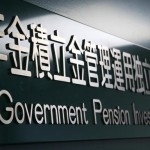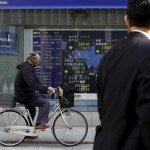Japanese bonds are headed for their worst quarter in 13 years

-
‘It’s simply a misunderstanding’ by market: Tokai Tokyo’s Sano
-
Falling liquidity exposes market to spike in yields, Sano says
Japan bond superbull Kazuhiko Sano remains committed to his stance that’s been vindicated since 2012 despite a recent surge in yields to the highest in five months, because he thinks the rout is driven by a “misunderstanding” over what the Bank of Japan will do next week.
Japanese government bonds are headed for their worst quarter in 13 years. A gauge that tracks notes with maturities longer than 10 years completed the longest losing streak in three years on Sept. 5 on concern the BOJ will signal a tapering of monetary easing when it reveals a comprehensive policy review at its Sept. 20-21 meeting. Governor Haruhiko Kuroda emphasized in a speech last week that the review won’t result in any reduction in monetary stimulus, while “other new ideas should not be off the table.”
The BOJ’s unprecedented stimulus has helped to send yields on about 70 percent of Japanese sovereign notes below zero, while a lack of liquidity has led to volatility in the securities over 30 days to average 4 percent this year, which would be the highest annual mean since 1999.

“It’s simply a misunderstanding by the JGB market,” said Sano, chief bond strategist at Tokai Tokyo Securities Co., who made three daring and accurate projections as the 10-year JGB yield plunged toward zero. “The BOJ likely has structured its current policy framework to ensure there will be no tapering during Kuroda’s tenure.”
The BOJ will stand pat this month, saving its ammunition for the next meeting on Oct. 31-Nov. 1, Sano said in a Sept. 6 interview in Tokyo. The central bank wants to keep bond purchases at a pace that allows it to sustain the program as long as possible when it is already buying more than 90 percent of bonds in the market, he said.
For a story on the BOJ’s forthcoming comprehensive policy review, click here.
Sano, 54, has been a bond analyst since 1988 and joined Tokai Tokyo in 2010 after working for Citigroup Inc. When the 10-year yield was closer to 1 percent in 2012, hecorrectly forecast it would drop to 0.5 percent in 2013, followed by accurate calls for 0.25 percent by March 2015 and to 0.1 percent in the first quarter of 2016.
Yields on maturities from 10 to 40 years rose to their highest since March on Sept. 5. Just two months ago, these long-dated notes were rallying to send yields close to, or below zero, with the 20-year temporarily sinking to an unprecedented minus 0.005 percent, while the 10-year yield dived to minus 0.3 percent.
It fell one basis point to minus 0.03 percent as of 10:29 a.m. in Tokyo Monday, while 10-year bond futures climbed 0.4 percent. The 40-year yield rose one basis point to 0.615 percent, the highest since March 17. The yield on two-year notes decreased 2 1/2 basis points to minus 0.26 percent, while the yield on five-year debt declined 1 1/2 basis points to minus 0.2 percent.
Downward Trend
“The BOJ’s aggressive bond buying keeps yields in a downward trendline,” Sano said. “But the declining liquidity exposes market to a spike in yields. Just tiny knee-jerk selling triggered by the word ‘review’ magnifies moves. ”
Sano believes the lows for yields in July are unlikely to be exceeded on a sustained basis. He’s sticking to his earlier forecast for the 10-year yield to fall to as low as minus 0.4 percent and that for the 40-year to find a floor at zero. The 20-year yield could still fall to as low as minus 0.05 percent and the 30-year to minus 0.025 percent this fiscal year. After the recent rout, he raised his estimates of the upper range for super-long maturities while maintaining the 10-year yield will be capped at 0.05 percent.
“Except for overshoots, yields have probably scaled the peak for the current fiscal year,” Sano said. “The BOJ continuing to buy means yields will fall if left on their own and there should be a downward trendline — people should remember that. I have beenrecommending investors to buy as yields rise: I am convinced they will all be profitable after Sept. 21.”
Source: Bloomberg




























